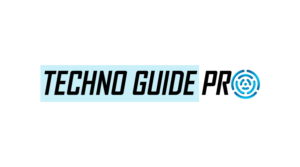Accessing details and also interactive sources available around the globe by means of the Net is a rather basic task. In a carefree Net world, the dynamics of attaching to sources are transparent, as well as we expect resources we want to gain access to are readily available via our regional Internet service provider. technoguidepro Technical information of attaching to Internet resources are an abstract idea for many, as well as whatever mechanics happen behind the scenes are not pertinent to our everyday use the network.
Because the Internet is made up of a complex matrix of physical, company and global connections, exactly how these systems connect and also team up is actually extremely vital throughout user, as well as to those supplying Web solutions and material. Of the best worry influencing on the internet sources from ebay.com to the Bank of America is the prospective financial stress prompted by the biggest Rate 1 networks. As the only networks in the world having worldwide Internet exposure, these few companies, consisting of AT&T, Sprint, Verizon, Degree 3, and Wire and also Wireless, promote accessibility to the international Internet – a function which people and also companies worldwide rely on to ensure little networks and also content providers are offered through their local company.
The Tier 1 globe was birthed at the death of NSFNet (National Scientific Research Foundation Network). In the very early days of Web development, the NSF sustained development of a large openly funded scholastic as well as study network throughout the United States, as well as attaching many foreign scholastic networks to the US as a center with the International Connections Manager (ICM Network). techvaluetrends As industrial Web advancement grew in the very early 1990s, the NSF realized it was time to retreat from publicly funding the “Web” and approve agreements to huge US carriers to take over duty for the former US Domestic foundation and also ICM portions of the NSFNet.
Tiny Web exchange points (IXPs) were additionally funded, enabling the big networks taking over NSFNet possessions, as well as their own business Nets to attach as well as share Net web traffic. Those network gain access to points (NAPs) were additionally gotten to the large US carriers, that handled plans for US and International network exchange. The large US service providers eventually had control of the networks, and were the initial Rate 1 Web carriers.
Obstructions in the Web Community
Arguments around internet neutrality emphasize some underlying concerns. TechnoMagazine The goal of internet neutrality is to protect the open as well as interconnected nature of the general public Internet. But whether the biggest networks use their control to prevent development and also advancement within the Internet-connect company area or impede open door to Internet-connected content sources, they have the power and control which could provide obstacles to an open Internet setting.
A Tier 1 network, for instance, has the power to charge a major content delivery network (CDN) a costs to access its network. This is because the CDN might provide a huge quantity of material traffic right into a network, and also the Tier 1 network thinks they should get additional payment to fund additional capacity needed to support material circulation. This costs may be more cash than the CDN is willing or able to pay. GadgetsMonk In turn, if the CDN doesn’t abide, the Rate 1 can ultimately refuse the CDN accessibility to its network as well as cut its customers access to the CDN’s material. This uses whether consumers access the Rate 1 directly or if the Rate 1 is the middle-network between consumers as well as their Tier 2 or 3 networks.





